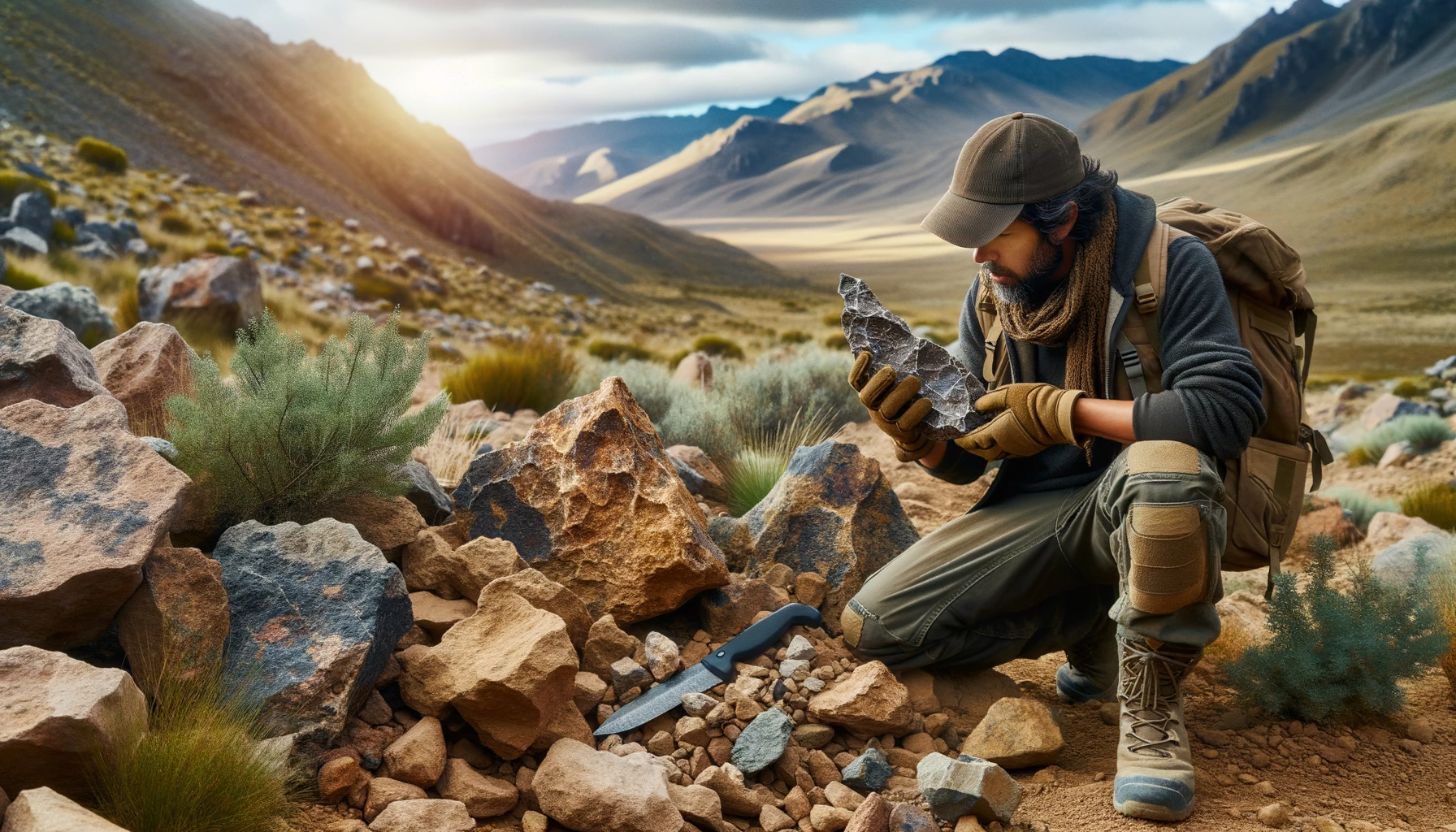Flint is a valuable natural resource that has been used throughout history for various purposes. From tools to weaponry, flint has been essential for human survival for thousands of years. In this comprehensive guide, we will share with you the techniques and methods necessary to find flint. By following our guidance, you will be able to uncover nature’s spark and enhance your survival skills.
Key Takeaways
- Flint is a valuable natural resource used for various purposes throughout history.
- By learning how to find flint, you can enhance your survival skills.
- Understanding the significance of flint and its geological indicators is crucial for successful hunting.
- Equipping yourself with the right tools and equipment is essential for efficient flint hunting.
- Flint must undergo preparation and processing before it can be used for various applications.
Understanding Flint and Its Significance
Before you set out on your quest to find flint, it’s essential to understand what it is and why it’s significant. Flint is a hard, sedimentary rock that is composed of microcrystalline quartz, chert, and silica. Its color can range from gray to black, and it’s most commonly found in chalk and limestone deposits.
Flint has been historically significant as it was used by ancient civilizations for various purposes, including tools, weapons, and fire-making. The discovery of flint rock revolutionized the way our ancestors hunted, and it was used to create sharp edges for blades, arrows, and spears. It also played a vital role in the development of early technologies and civilizations.
Disclosure: When you buy through links on our site, we may earn an affiliate commission.
If you’re interested in sourcing flint for its historical significance or practical uses, it’s essential to understand the geological indicators that contribute to its presence. Understanding the composition of flint and how it has been used throughout history will provide you with a strong foundation for your search.
When searching for flint, it’s crucial to remember that it is not always readily accessible. However, with proper guidance and the right techniques, flint sourcing can be a rewarding experience. Are you ready to start your journey?

Identifying Suitable Flint Deposits
Locating flint deposits requires a basic understanding of the geology of the surrounding area. Flint is typically found in sedimentary rocks, such as limestone and chalk, and is often concentrated in specific areas.
The first step in identifying suitable flint deposits is to look for exposed outcrops. These are areas where the underlying rock is visible at the surface. Exposed outcrops provide an opportunity to observe the rock’s characteristics and determine its suitability for flint extraction. Riverbanks and dry streambeds can also be excellent locations to look for flint as the water erosion process exposes the underlying rock layers. Ancient riverbeds are particularly promising because they tend to be rich in flint deposits.
Another method for locating flint is to look for specific types of rock formations associated with flint. For example, layers of black flint are often found in white chalk rock formations. If you are in an area with limestone bedrock, flint is often found in bands of flint nodules within the limestone.
It is important to note that while some areas may have suitable rock formations for flint, not all exposed rocks contain useable flint. To determine whether a specific rock contains flint, you will need to inspect it for the characteristic texture, appearance, and color of flint.
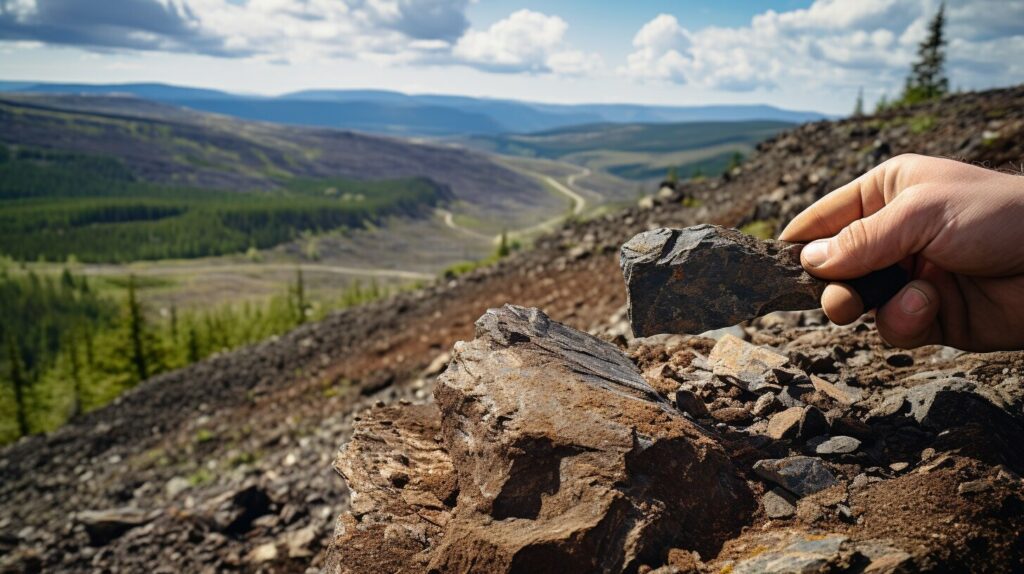
Identifying Suitable Flint Deposits Summary:
- Look for exposed outcrops, particularly in ancient riverbeds
- Search for specific rock formations, such as black flint in white chalk rock
- Inspect rocks for characteristics of flint
Geological Indicators for Flint Hunting
Once you have identified potential areas for finding flint, it is crucial to recognize the geological indicators that can significantly aid your search. Identifying flint-rich rocks and minerals can significantly enhance your potential for finding flint.
One of the most effective flint identification techniques is to pay attention to the texture, color, and appearance of the surrounding rocks. Flint tends to have a smooth and glassy texture, with a dark or blackish color. You may also notice a waxy or oily surface on flint stones, which distinguishes it from other rocks. Keep an eye out for rocks that look like they have a glassy surface or a solid, opaque appearance.
Another key geological indicator when searching for flint is the presence of chert. Chert is a sedimentary rock that often contains flint and can be found in various locations across the world, including riverbeds and cliffs.
When identifying flint-rich areas, it is also essential to examine the surrounding rocks and minerals. Limestone and shale are two types of rocks that are commonly associated with the presence of flint. If you notice these types of rocks in the area you are searching, be sure to examine them closely for signs of flint.
Remember that geological indicators for flint hunting can vary depending on the location and geological formation of the area you are searching. It may be necessary to consult with local experts or geological surveys to determine the best methods for identifying flint-rich areas for your specific location.
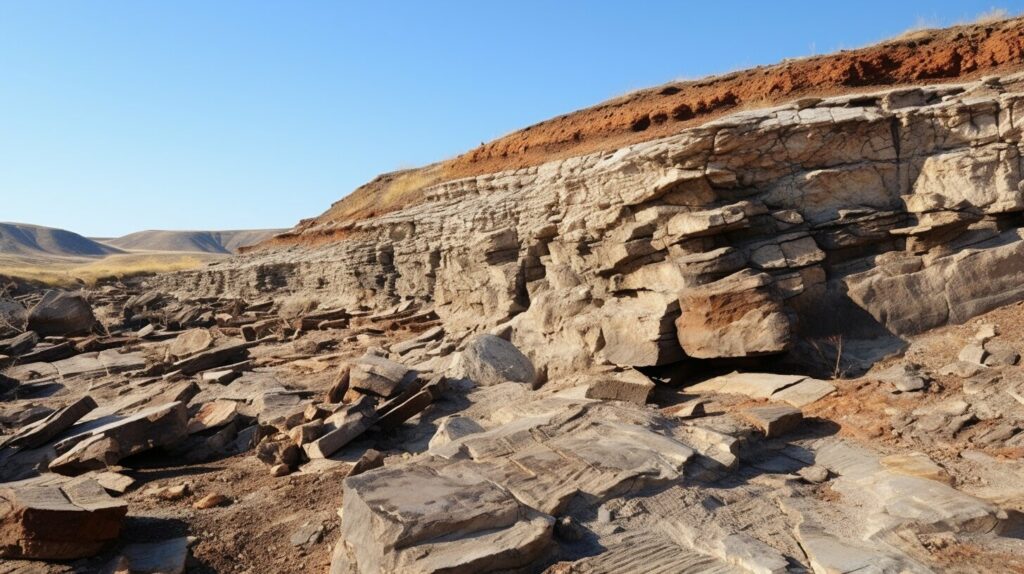
Using these geological indicators for flint hunting can significantly enhance your chances of finding this valuable resource. Keep in mind that it may take some time and practice to develop your skills for locating flint, but with patience and persistence, you can become an expert at finding nature’s spark.
Tools and Equipment for Flint Hunting
Equipping yourself with the right tools and equipment is crucial for successful flint hunting. Whether you are a beginner or an experienced flint hunter, the following tips will be helpful in finding flint:
- Geological hammer: A geological hammer is the most important tool for any flint hunter. It is used to break open rocks and expose hidden flint deposits. A flat head hammer is recommended as it provides a wider striking area and helps in avoiding damage to the flint.
- Chisels: Chisels can be used to extract flint from crevices and narrow spaces. They can also be used for shaping and refining flint tools.
- Magnifying lens: A magnifying lens can aid in identifying flint by allowing you to examine the surface texture and unique features of the rock.
- Safety Gear: Safety should be a top priority during your flint hunting expedition, and you should wear protective gear such as gloves, goggles, and a dust mask to avoid injury or respiratory problems.
- Backpack: You need a sturdy backpack to carry your tools, water, navigational equipment, and first-aid kit.
Make sure to pack your tools in a secure and organized manner so that you can easily access them during your search. Remember to dress appropriately for the weather conditions and wear comfortable shoes that provide proper support and traction.

Techniques for Flint Extraction
Once you have identified a potential source of flint, it’s time to extract it from its natural surroundings. There are several techniques you can use, depending on the location and size of the flint deposit.
Surface Collection
The simplest and most straightforward method for extracting flint is surface collection. This technique involves scanning the surface of the area for loose flint nodules or flakes. You can use your hands or a trowel to gently pick them up. Be sure to examine the surrounding area carefully, as flint nodules may have been exposed due to erosion or recent weather activity.
Excavation
If you suspect that there is a larger deposit of flint beneath the surface, you may need to excavate the area. This technique involves digging a trench or hole and carefully removing the dirt to access the flint deposit. You can use a shovel or a pickaxe to dig, but be careful not to damage any potential flint nodules in the process. It may be helpful to sift through the soil to find any small flakes or nodules.
Quarrying
If you are searching for a significant amount of flint, quarrying may be your best option. This technique involves removing large sections of rock or soil to access the flint deposit underneath. You will need larger equipment such as a rock hammer, chisel, or a pickaxe to break up the rock and extract the flint. Be sure to wear safety gear such as gloves and goggles.
It’s important to note that quarrying may not be legal in all areas, so be sure to check local regulations before attempting this technique. Additionally, quarrying can be destructive to the environment, so use this technique with caution.
With these techniques in mind, you can start searching for and extracting flint for your various needs.
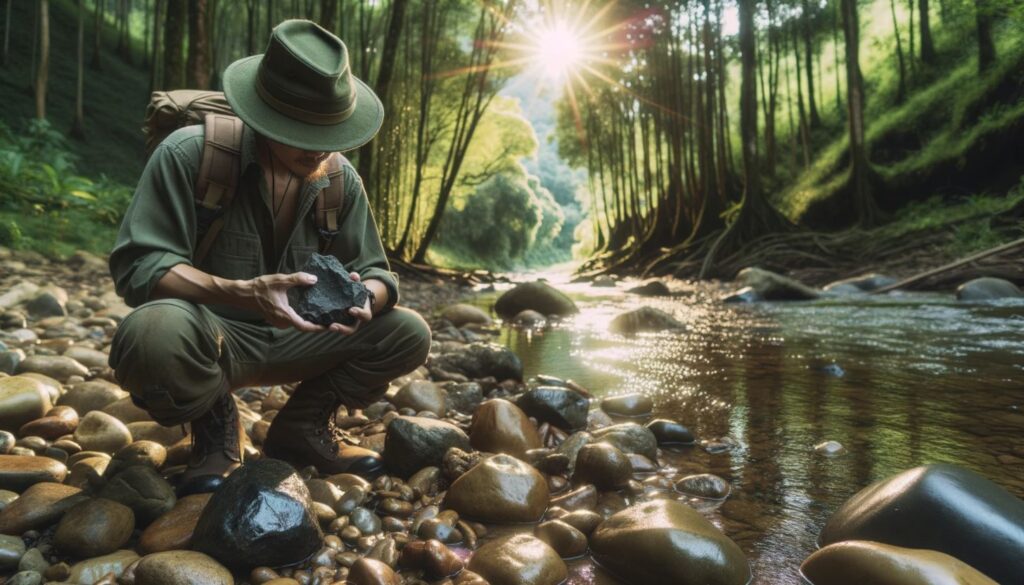
Flint Preparation and Processing
After successfully extracting flint from its natural surroundings, it must undergo preparation and processing to become a functional resource. In this section, we will explore techniques for preparing and shaping flint into tools, weapons, and decorative items.
Knapping
Knapping is the technique of shaping flint by striking it with another object to create sharp edges. This process was used by ancient civilizations to create arrowheads, knives, and other cutting tools. To knap flint, you need a hard object like antler, bone, or copper, known as a hammerstone or billet.
Hold the flint in one hand and the hammerstone in the other. Strike the edge of the flint with the hammerstone to remove small flakes. Gradually shape the flint by removing small flakes until the desired shape is achieved.
Heat-Treating
Heat-treating involves exposing flint to heat to increase its knapping ability. This process removes moisture and hardens flint, making it easier to shape. To heat-treat flint, build a fire and place the flint in the center of the fire. Heat the flint until it reaches a cherry-red color, then remove it from the fire and let it cool slowly.
Shaping
Once you have prepared the flint, you can shape it into various forms, including arrowheads, scrapers, and spear points. Use a combination of knapping and grinding to shape flint into your desired form. For example, to create an arrowhead, begin by shaping the flint into a triangular shape with a pointed tip. Then, use a grinding stone or sandpaper to sharpen the edges and smooth out any rough surfaces.
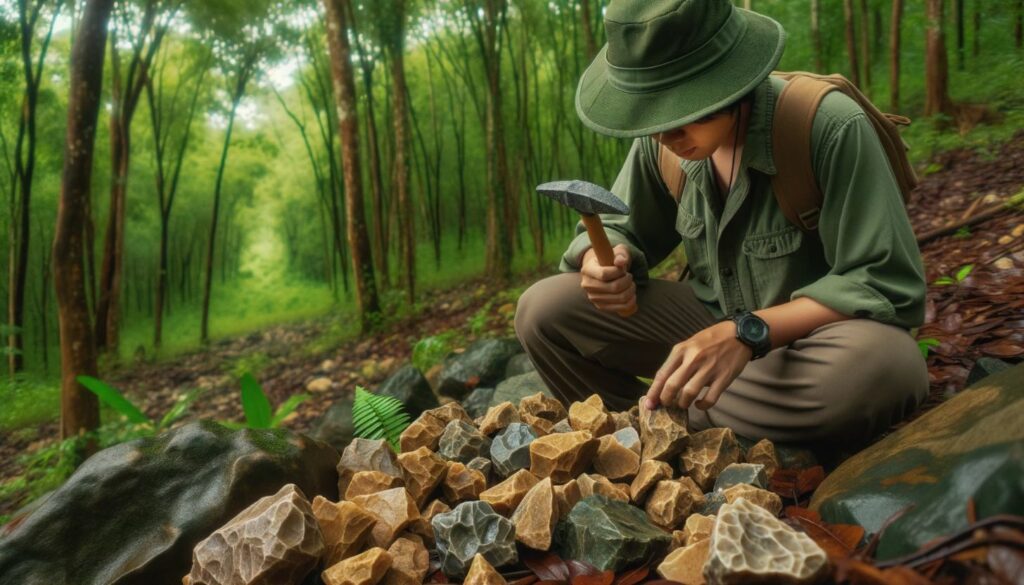
By mastering the techniques of knapping, heat-treating, and shaping, you can transform flint from a raw material to a functional resource. The resulting tools and weapons can be used for survival and hunting, while decorative items can add a unique touch to your collection.
Historical and Cultural Significance of Flint
Flint has been an essential material throughout history, with evidence of its use dating back to the Stone Age. Its discovery revolutionized early human societies, providing them with a reliable source of tools for hunting, making fire, and shaping other materials.
Ancient civilizations, such as the Greeks and Romans, recognized the value of flint and used it for various purposes. The Mayan civilization, for example, utilized flint for rituals and ceremonies, often creating intricate carvings and figurines. In Native American culture, flint was considered a sacred stone, used for making arrowheads, knives, and other tools necessary for hunting and survival.
As the world evolved and technology advanced, the use of flint continued to expand. During the Industrial Revolution, flint was a valuable resource for creating spark igniters for firearms and later, automobiles. Today, flint remains a versatile material, used for decorative purposes, as well as in archeology and geology.
“Flint tools played an integral role in shaping human history and the development of early civilizations.”

The use of flint tools played an integral role in shaping human history and the development of early civilizations. With its ability to produce sparks and ignite fires, flint was a fundamental component in the advancement of hunting and survival skills and represented a major technological milestone for early humans.
Flint has also played a significant role in the evolution of cultural traditions, shaping the development of societies and influencing the art and craft of various civilizations. The use of flint in artistic expressions such as jewelry and figurines continues to this day, and its historical significance has inspired countless scholars and researchers to explore its properties and uses.
In conclusion, the cultural and historical significance of flint cannot be overstated. From its early use in primitive societies to its contemporary applications, flint has played a vital role in human history, shaping the technological, cultural, and artistic advances of many civilizations.
Modern Applications of Flint
Flint, with its unique properties, has many modern applications. One of the most notable is its use in spark igniters, which rely on the flint’s ability to create a spark when struck against certain materials. This makes it a popular choice for lighting gas grills, torches, and even fireworks.
Archaeological research also benefits from flint, as it provides valuable insight into the tools and technologies of past civilizations. By studying flint artifacts, researchers can uncover the methods and techniques used to shape and manipulate the material, shedding light on the ingenuity of our ancestors.
Additionally, flint has found a place in modern jewelry-making. Its unique patterns and colors make it a desirable addition to necklaces, bracelets, and earrings. Flint sourced from specific regions, such as the chalk cliffs of England, has become particularly sought after by designers and collectors alike.
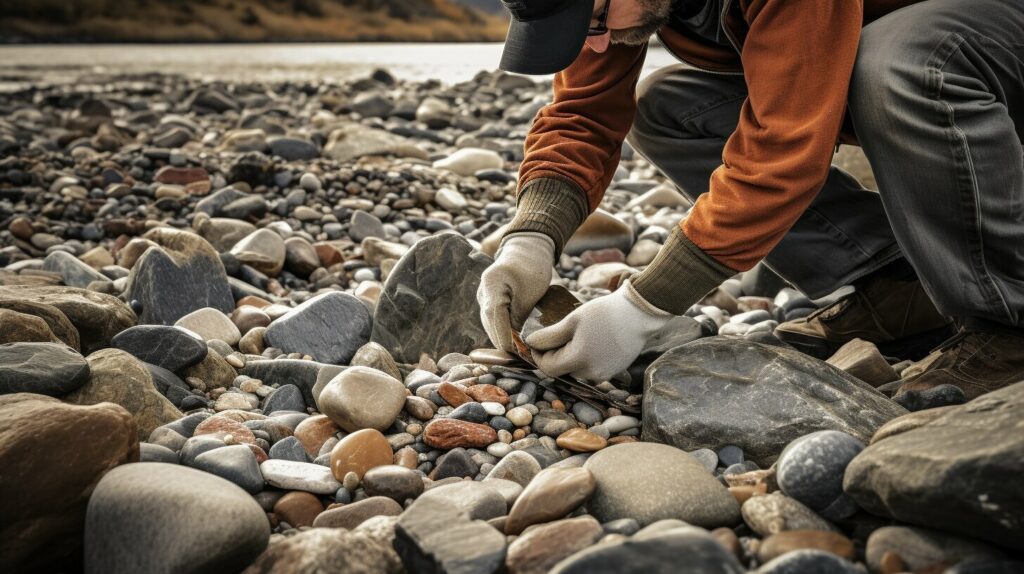
With modern technology, the sourcing of flint has become more accessible than ever before. Online resources and specialty suppliers offer a range of flint products, from raw materials to polished stones and jewelry. However, for those seeking the thrill of the hunt, the traditional methods outlined in this guide remain a viable and rewarding option.
Conclusion
Finding flint can be a rewarding pursuit that connects us to the ingenuity of our ancestors. By understanding flint’s geological origins, historical significance, and practical uses, we gain insight into this unique natural resource. With the proper tools, technique, and knowledge, the hidden gems of flint can be uncovered.
Though modern technology provides alternatives, the timeless spark of flint continues to hold an enduring appeal. The satisfaction of shaping raw flint into a useful tool or decorative item remains unparalleled. Flint hunting allows one to tap into the resourcefulness and creativity that defined our early ancestors.
In summary, the allure of flint encompasses both its practical merits and its powerful ties to human history. While requiring patience and perseverance, seeking out flint creates an opportunity to enhance one’s skills while forming a deeper connection with the past. Wherever your flint-finding journey leads, revel in the knowledge that you are taking part in an ancient and meaningful tradition.
How to find flint?
Finding flint involves understanding its geological indicators and identifying suitable flint-rich areas. By using techniques like recognizing flint’s appearance, texture, and color, as well as examining surrounding rocks and minerals, you can enhance your chances of locating flint deposits.
What are the tools and equipment needed for flint hunting?
Essential tools for flint hunting include geological hammers, chisels, magnifying lenses, and safety gear. Having the right equipment will increase your efficiency and safety during the flint hunting process.
How do I extract flint once I’ve located it?
Extraction techniques for flint include surface collection, excavation, and quarrying. Depending on the size and location of the flint deposit, you will need to choose the appropriate method for extracting flint from its natural surroundings.
What can flint be used for?
Flint has a variety of applications, both historically and in modern times. It has been used as a tool for survival and hunting, in the creation of fire, for early technologies, and even in contemporary uses such as spark igniters, archeological research, and jewelry.
What is the historical significance of flint?
Flint holds immense historical and cultural significance. It has played a crucial role in the development of early civilizations, serving as a versatile tool and a means of creating fire. Understanding the history of flint provides insights into the ingenuity and resourcefulness of our ancestors.
Why is it important to prepare and process flint?
Flint must undergo preparation and processing before it can be used for various applications. Techniques such as knapping, heat-treating, and shaping flint into usable tools or decorative items are necessary to transform the raw material into a functional resource.

